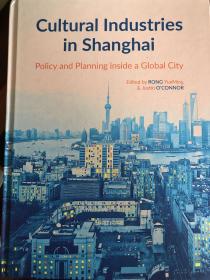The Impact of Color Discrepancies in Textiles on Quality and Brand Image
Color disparities in textiles can significantly impact the quality and brand image of a product. These variations can occur due to various factors such as manufacturing processes, dyeing techniques, or even the choice of color palette by the designer. When these differences are not properly addressed, they can lead to dissatisfaction among consumers, resulting in reduced sales and damage to the brand's reputation. To address this issue, manufacturers should invest in advanced color calibration technologies that ensure consistency in color across different batches and products. Additionally, regular quality checks and third-party certifications can help verify the authenticity of colors and prevent any misunderstandings between consumers and the brand. By taking these steps, companies can maintain their brand's integrity and appeal to a wider audience while ensuring that every piece of clothing they produce meets high standards of quality and color accuracy.
Introduction: In today's competitive global market, the importance of color accuracy cannot be overstated in the textile industry. Color is often seen as the most critical element in determining a product's appeal and perceived quality. However, when it comes to high-end or luxury items such as clothing, home furnishings, and accessories, color disparities can significantly impact consumer perceptions and ultimately affect brand image and sales. This presentation will explore the significance of color accuracy in textiles and its implications for both manufacturers and consumers.
Color Accuracy: Understanding the Basics Color accuracy refers to the consistency and precision with which colors are produced in textiles. It encompasses not only the hue, saturation, and value (HSV) of a color but also the brightness and luminance levels. A well-executed color process ensures that the final product matches the original design intent, providing a consistent visual experience for consumers.
Factors Affecting Color Accuracy:

-
Material Choice: The inherent properties of the fabric material can influence how colors appear. For example, certain dyes may be more prone to fading or bleeding than others.
-
Processing Techniques: The method of dyeing, printing, or finishing can greatly affect the final color output. Advanced technology can help minimize discrepancies, while traditional methods may result in noticeable differences.
-
Quality Control: Proper quality control measures during production can prevent color variations from occurring. These include monitoring dye baths, ensuring uniformity in dye application, and regular calibration of equipment.
-
Design Considerations: Designers must take into account the potential for color shifts when creating patterns or using contrasting colors. They should consider the limitations of their materials and choose colors that are compatible with them.
-
Storage Conditions: The storage environment can affect the longevity of colors, leading to fading or discoloration. Properly stored textiles should be inspected regularly to ensure color integrity.
-
Consumer Expectations: The level of sophistication and detail in a product can influence consumer expectations regarding color accuracy. Luxury goods may require even greater attention to detail and stricter standards for color consistency.
Case Study: Nike's Color Accuracy Crisis In 2017, Nike faced a significant crisis due to color discrepancies in some of its Air Force 1 sneakers. The company had been known for producing high-quality products with precise color matching, but this time, consumers reported that the shoes appeared darker than expected. Nike quickly acknowledged the issue and issued an apology, offering free exchanges and repairs. The incident highlighted the importance of maintaining high standards for color accuracy across all products.
Impact on Brand Image and Sales: The Nike case serves as a stark reminder of the consequences of color inconsistencies. While Nike has since addressed the issue and regained consumer trust, it underscores the importance of maintaining color accuracy in all products. In the context of luxury goods, such discrepancies can be especially damaging, as they can signal a lack of attention to detail or a failure to meet consumer expectations.
Conclusion: Color accuracy is paramount in the textile industry, particularly for high-end products like clothing, home furnishings, and accessories. Manufacturers must invest in advanced processing techniques, rigorous quality control measures, and effective design strategies to ensure that colors match their original intent. Consumers, too, have become more discerning about color accuracy, demanding products that meet their standards for quality and style. As the textile industry continues to evolve, color accuracy will remain a critical factor in shaping consumer perceptions and driving sales.

纺织品颜色深色差概述
在纺织品的世界里,颜色的深浅差异总是让人感到好奇,我们就来聊聊那些令人困惑的纺织品颜色深色差问题。
纺织品颜色深色差的表现
-
颜色深度差异明显 在纺织品市场中,我们经常能看到各种深浅不一的颜色,有些纺织品颜色深沉,给人一种稳重、高雅的感觉;而有些则显得更为浓郁、热烈。
-
影响因素 影响纺织品颜色深色差的因素有很多,包括纺织材料的种类、染色工艺、织造工艺等,不同的纺织材料和染色工艺可能会产生不同的颜色效果。
案例分析
以某知名品牌的一款深色系纺织品为例,展示其深色差的表现。
案例描述:

该品牌的一款深色系纺织品,采用了高质量的天然纤维材料,经过特殊的染色工艺处理,呈现出一种深沉而神秘的色调,这种颜色不仅显得高贵典雅,还给人一种稳重、大气的感觉。
表格说明:
| 参数 | 描述 |
|---|---|
| 纺织材料 | 高品质天然纤维 |
| 染色工艺 | 采用先进的染色技术,确保颜色均匀且持久 |
| 织造工艺 | 采用精细的织造技术,确保织物质地紧密、手感舒适 |
讨论与建议
讨论方面:
- 对于消费者来说,深色系纺织品在视觉上给人一种稳重、高雅的感觉,非常适合商务场合或高端场合穿着。
- 对于生产商来说,了解并掌握纺织品颜色深色差的影响因素和调整方法,可以更好地满足消费者的需求,提高产品的竞争力。
- 对于设计师来说,他们可以通过不同的纺织材料和染色工艺,创造出更多样化的深色系纺织品,满足不同消费者的需求。
建议方面:
- 在选购纺织品时,消费者可以根据自己的需求和喜好选择合适的颜色和款式,对于深色系纺织品,可以选择那些质地紧密、手感舒适的产品。
- 对于生产商来说,他们可以通过不断研发和创新,提高纺织品的颜色均匀度、持久性等性能指标,以满足消费者的需求,他们还可以通过优化织造工艺和染色工艺,提高产品的美观度和舒适度。
- 对于设计师来说,他们可以通过学习和借鉴其他国家的纺织品设计风格和工艺技术,创造出更多样化的深色系纺织品,满足不同消费者的审美需求。
总结与展望
纺织品颜色深色差是一个复杂的问题,涉及到多个因素,在市场上,我们可以看到各种深浅不一的颜色和款式,对于消费者来说,了解并掌握纺织品颜色深色差的影响因素和调整方法,可以更好地选择适合自己的纺织品,生产商和设计师也应该不断努力,提高纺织品的性能指标和质量水平,满足消费者的需求和审美需求,纺织品颜色深色差的问题将会越来越受到重视和关注。
Articles related to the knowledge points of this article:
The Role of Textile Testing Laboratories in the Fashion Industry
Exploring the Global Market with Wuxi Fengyi Textiles
Understanding Color in Textiles:A Comprehensive Guide



